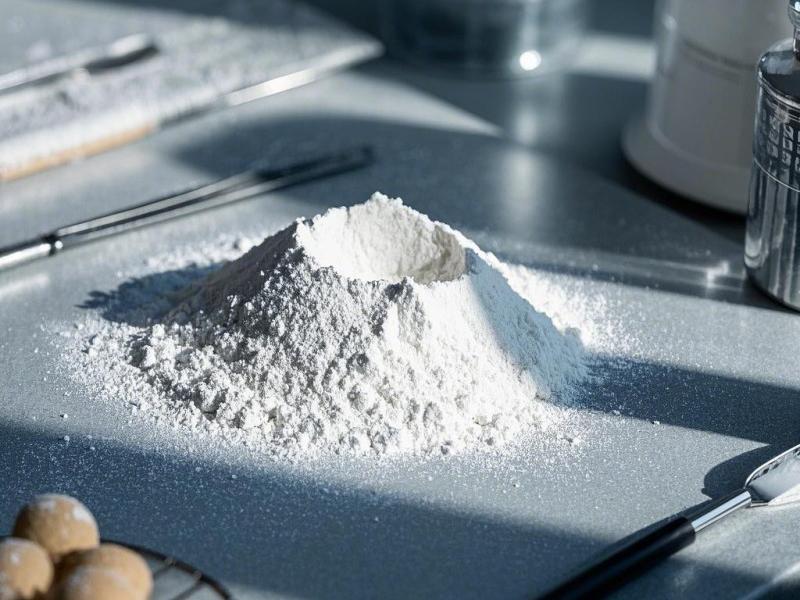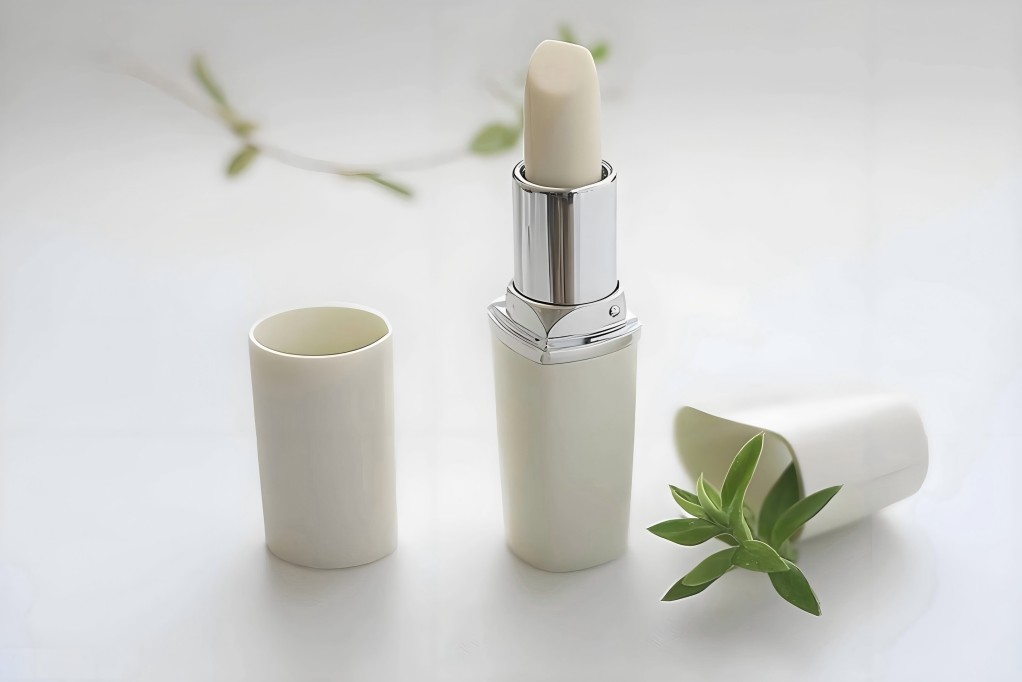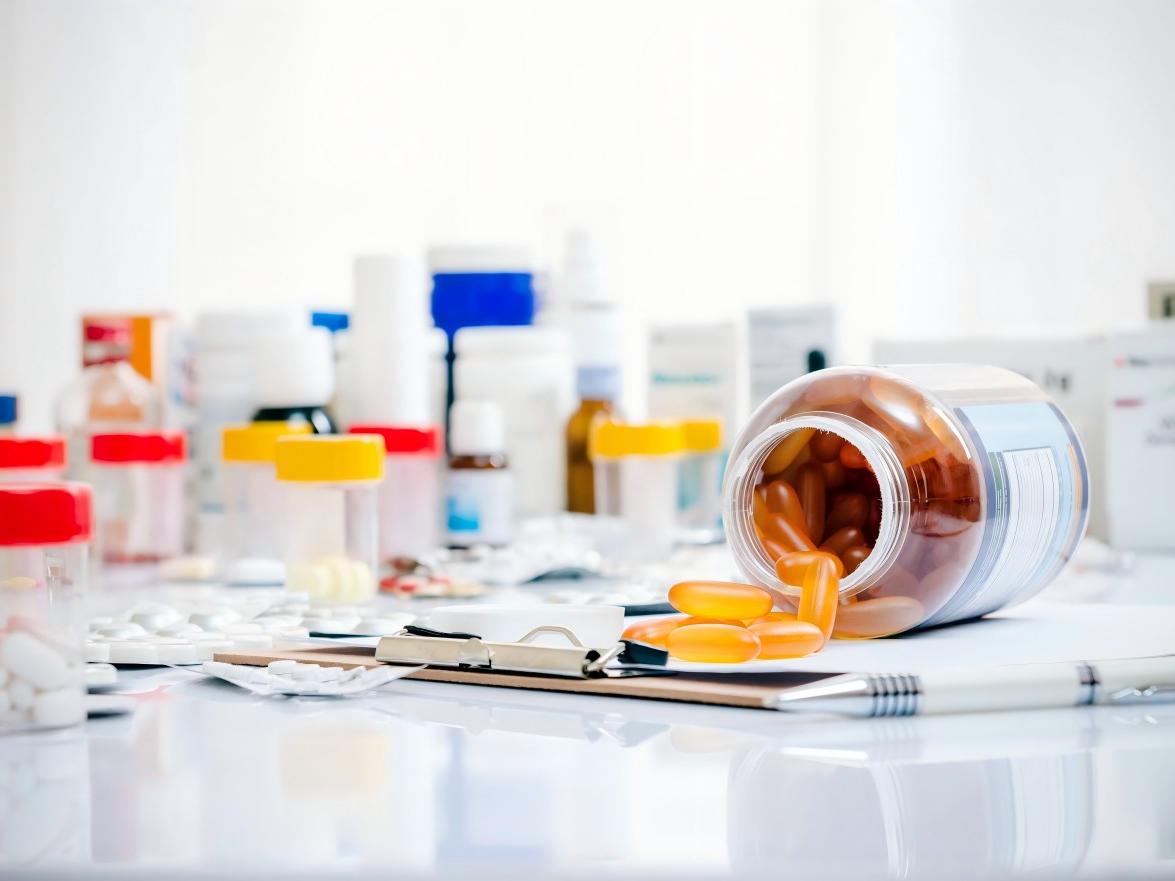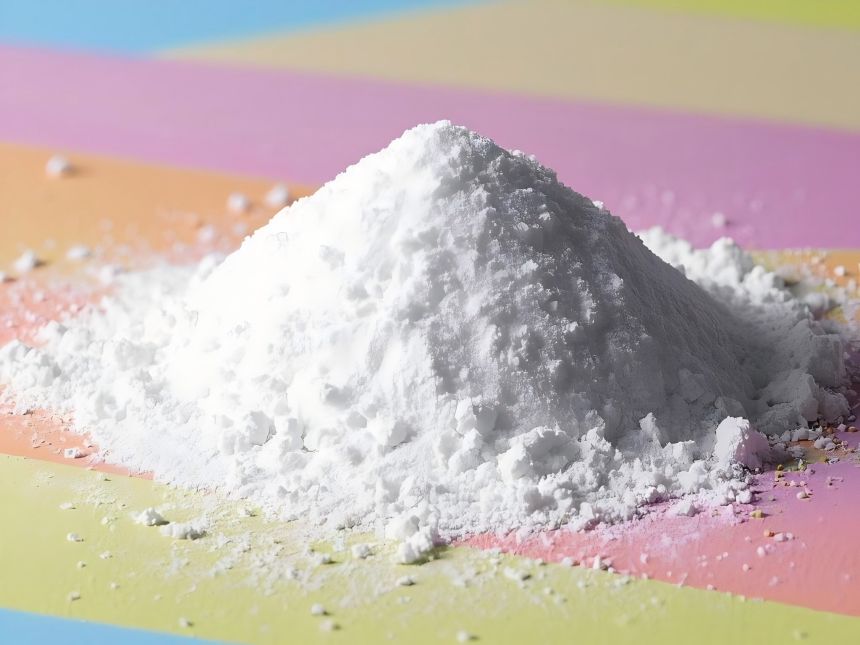What Are the Sources of Octacosanol?
In 1937, foreign scholars discovered that octacosanol had a therapeutic effect on human reproductive disorders. In 1949, after Dr. T.K. Cureton of the University of Illinois discovered octacosanol in wheat germ oil, many people conducted extensive research on its medicinal and physiological functions. After years of testing and research on animals and humans in many projects, the various physiological functions of octacosanol were determined. In particular, Cuba's Laguna Granjal²- and other patents on the method of preparing a mixture of high-grade primary aliphatic alcohols from sugar cane wax and their pharmaceutical applications use the waste residue of the sugar cane sugar production process, the filter mud, to extract sugar cane wax as a raw material for preparing octacosanol.
The octacosanol obtained through this process has been approved by the US FDA. Octacosanol can be used to make various health functional foods, such as candy, pastries, and beverages; it can also be used as a medicine to treat osteoporosis, high cholesterol, and high lipoprotein blood; it also has anti-inflammatory properties and can prevent and treat skin diseases (such as athlete's foot, eczema, itching, acne, etc.); and it can improve athletic performance and stimulate the sexual behavior of animals and humans. Currently, research and development is underway in many countries and regions,8 and the market application prospects are bright. As octacosanol can be obtained from sugarcane wax extracted from filter mud, it is introduced here in the hope of attracting the attention of professionals in the sugarcane sugar industry.
1 Physicochemical properties of octacosanol
Octacosanol is also known as policosanol, with the trade names Mundanol (known as Sorghumol in Japan) and 1-octacosanol,n-octacosanol or Policosanol, with a chemical structure of CH₃(CH₂)26CH₂OH, a molecular weight of 410, a relative density of 0.783 g/cm² (85°C), a melting point of 81–83°C, a boiling point of 250°C and an absolute pressure. It appears as a white powder or scaly crystals⁹-101. Octacosanol is a saturated straight-chain higher aliphatic alcohol that is soluble in hot ethanol, isopropanol, n-hexane, n-heptane, ether, petroleum ether, benzene, toluene, chloroform, acetone, benzene, toluene and other organic solvents, but insoluble in water. It is stable to acids, alkalis and reducing agents, does not absorb moisture, and has the general chemical properties of a primary alcohol. Because it has a hydroxyl group, it can undergo chemical reactions such as esterification, dehydration, and dehydroxylation to form an aldehyde, and it decomposes at high temperatures.
2 The medicinal and health functions of octacosanol
Octacosanol is a calciferol forming promoter, which can be used to treat osteoporosis caused by excessive blood calcium; treat high cholesterol and high lipoprotein blood types, lower blood pressure, and stimulate sexual behavior in animals and humans. Cosmetics containing octacosanol can promote blood circulation in the skin and activate cells, and have the effect of anti-inflammatory and preventing skin diseases (such as athlete's foot, eczema, itching, acne, etc.)4.
It has the function of improving sports performance4.9-10.12.15-171, such as: it can enhance endurance and physical strength, improve muscle strength, relieve muscle pain, reduce muscle friction, shorten muscle nerve response time, improve response sensitivity, strengthen heart function, increase basal metabolic rate, enhance resistance to stress such as high altitude, and improve oxygen transport capacity.
As octacosanol is a natural product, it is extremely safe. 10³. Oral tests on mice have shown that the LDso of octacosanol is above 18,000 mg/kg. Its safety is much higher than that of salt (LDso=3000 mg/kg). Clinical practice has proven that it can be taken for a long time without side effects. However, the amount of octacosanol taken should not be too large. About 5 to 10 mg per person per day is enough, and the effect will be seen after 6 to 8 weeks.
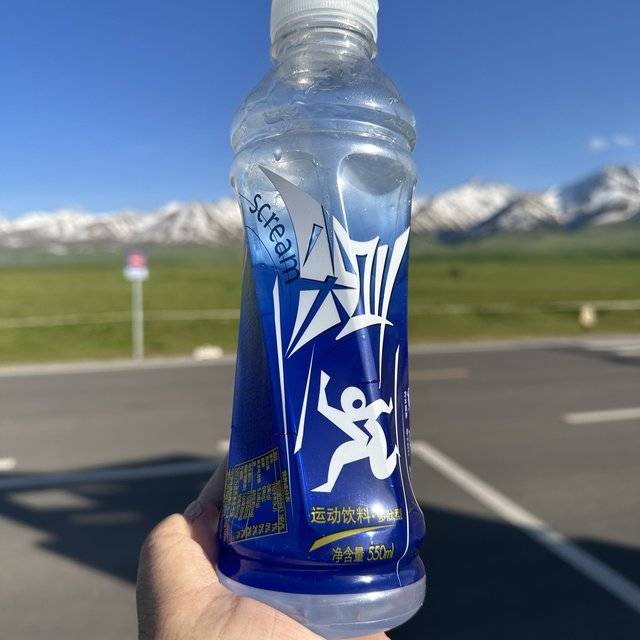
However, in reality, the so-called octacosanol used as a medicine or health product is extracted from natural waxes. 18 None of it is pure octacosanol, but a mixture of some higher fatty alcohols, the carbon chain length of which is generally even numbers from 22 to 34. Although some studies have shown that chemically synthesized octacosanol has the same function, there are not enough clinical trials to prove that the toxicity of the small amount of by-products in the chemical synthesis is within the allowable range. Therefore, consumers are skeptical about synthetic chemicals. In addition, there are still some deficiencies in the synthesis method, so chemically synthesized octacosanol products are still not accepted on the market.
3 Distribution and content of octacosanol in nature
Octacosanol is a natural long-chain high-grade fatty alcohol. In nature, high-grade alcohols represented by octacosanol rarely exist in a free state, and the vast majority of them exist in the form of fatty acid esters. High-grade fatty alcohols are widely found in nature12.16-17, in almost all living things. They are widely found in the lipids of plants, animals, and insects. They are found in the roots, stems, leaves, bark, fruit peel, seed shells and kernels of plants; in the cutaneous lipids, organs, tissues, bone marrow and glands of humans and animals; and in the secreted lipids of insects. Wax esters rich in octacosanol include: 8.8): wheat germ oil, rice bran wax, sugar cane wax, flax stem wax, sorghum wax, pea shell wax, insect wax, beeswax, grape skin wax, candle wax, carnauba wax, sunflower wax, shellac wax, lanolin wax, etc. These waxes mainly contain fatty acid esters, as well as lipids, aldehydes, ketones, hydrocarbons and a small amount of free alcohol. When considering the content of octacosanol, the source of raw materials, the availability of the product, the price of the product, the difficulty of separating impurities, and the yield of effective separation, together with economic and technological factors, rice bran wax is the best raw material for producing octacosanol, followed by candelilla wax, beeswax, and sugar cane wax. However, since the relative content of octacosanol in the mixed higher alcohols extracted from sugarcane wax is the highest, and its medicinal effects have been proven in numerous clinical trials, it is currently the most readily accepted raw material for extracting octacosanol.
Kazuko et al. determined the content of free monohydric alcohols in the embryos and grains of nuts, seeds, fruits, and grains, as well as in other parts. The results show that higher alcohols are usually present in very small amounts, coexisting with large amounts of hydrocarbons, esters and glycerides. The content of octacosanol varies greatly in different parts of the plant. The content of octacosanol in dehulled grains is twice that in the embryo, while the content in seed coats and shells is only 1/15 to 1/2 of that in the embryo.
4 Preparation and separation methods for octacosanol
Since natural plants and animals rarely contain free octacosanol, most of it exists in the form of fatty alcohol esters. There are usually two ways to prepare it: synthesis and extraction.
4.1 Preparation of octacosanol
4.1.1 Chemical synthesis 2.0
4.1.1.1 Using tetradecanoic acid as the starting material, the reaction is carried out by electrochemical methods in a homogeneous medium (dissolved in an organic solvent).
4.1.1.2 Using docosanoic acid as one of the starting materials, it is also obtained by electrochemical reaction.
4.1.2 Extraction from natural products
4.1.2.1 Reduction method
A mixture of higher fatty alcohol esters is obtained by refining natural wax to obtain a relatively pure higher fatty alcohol ester “22, using LiAlH₄ as a reducing agent, tetrahydrofuran or ether as a solvent, and heating under pressure. The reaction mechanism is as follows:
where R and R' are both straight-chain fatty alkyl groups. In theory, this method should have a high yield, but there are relatively few articles on this method. An example of the extraction of higher fatty alcohols from insect wax is the molecular distillation of crude insect wax at 200°C and 0.5 Pa to obtain refined insect wax. In a pressure reactor, ether is used as a solvent, and LiA1Ha is slowly added stirring evenly, then adding refined carnauba wax, controlling the temperature at 70-80°C and the pressure at 0.43 MPa, reacting for 2.5 h, so that 28.8 g of mixed higher alcohols can be obtained from 100 g of crude carnauba wax, of which 16.7% is octacosanol.
4.1.2.2 Hydrolysis method²-3, 9, 23-271
also uses high-grade fatty acid esters of high-grade alcohols obtained from refined natural waxes. Saponification is generally carried out in a homogeneous mixture with a solvent such as water or an organic solvent, or the mixture can be melted directly without a solvent. A catalyst such as NaOH, KOH or Ca(OH)2 is added and the mixture is allowed to react for a long time, during which the high-grade fatty alcohols are produced by hydrolysis. The content of octacosanol varies greatly depending on the source of the wax. This method was discussed in the literature as early as the 1950s. A. A. Zinoviev of the former Soviet Union's “Fats and Oils Chemistry” proposed a method for extracting hexadecanol from whale wax: saponification of the whale wax with an alcoholic solution of alkali, distillation to remove the alcohol, the residue being fatty acids (or fatty acid salts) and free alcohol, addition of a large amount of water and heating to refine, so that the soap transfers to the aqueous phase and can be precipitated with CaCl₂. This gives a mixed alcohol.
In recent years, high-pressure hydrolysis, acid hydrolysis, enzymatic decomposition, ultrasonic hydrolysis, transesterification and other methods have also been used to achieve this. Ultrasonic hydrolysis can shorten the reaction time by more than 10 hours compared to the general method, from 12 to 16 hours to 1 to 2 hours, and the hydrolysis efficiency is increased many times¹. The advantages and disadvantages of the above methods mainly depend on whether the hydrolysis is easy or not, and whether the subsequent separation process is easy or not.
There have been many research papers published on the hydrolytic extraction of octacosanol, and many patents on the preparation of octacosanol have been achieved using the hydrolytic saponification method. Domestic research on the extraction of octacosanol from rice bran wax 16.23.28-29 is relatively comprehensive and in-depth, and has been put into production by multiple manufacturers. The preparation method is mostly homogeneous saponification of rice bran wax in an aqueous or alcoholic phase, followed by precipitation of the fatty acid soap with CaCl₂. An example of a patent document describes a method for extracting higher aliphatic alcohols from rice bran wax. The general process is as follows.
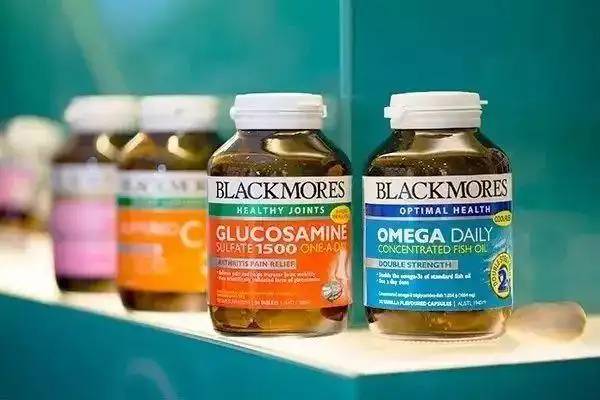
The lower layer of water with a pH of about 3 is removed, and CaCl₂ is added to the upper organic layer. After stirring at 80°C for 1 hour, the saturated fatty acid calcium forms a beige precipitate, which is filtered while still hot, and the n-butanol is removed by distillation to obtain crude alcohol. There has been a lot of research abroad on the extraction of octacosanol from beeswax and sugarcane wax. For example, A. Laguna Granja of Cuba and others have obtained patents in the United States and China for the extraction of octacosanol from sugarcane wax, and have also studied its pharmacological effects. Clinical trials have been conducted on animals and humans to further demonstrate its medicinal and therapeutic effects. The preparation method is as follows: The crude cane wax (or refined cane wax) is melted at 85-100°C, and a saturated aqueous solution of NaOH (KOH or Ca(OH)₂ can also be used as a catalyst) is added to the wax at a weight ratio of 15%-25%. The saponification time is 2-5 hours, and a mixture of fatty acids (or fatty acid salts) and higher fatty alcohols is obtained. The higher alcohols can be extracted with an organic solvent. The method for preparing a mixture of higher alcohols from beeswax is similar to that for preparing it from candelilla wax or other waxes: both are subjected to hydrolysis and saponification, after which the organic solvent is used to extract the mixture.
4.1.1.3 Other chemical synthesis methods
Some require nitrogen protection and homogeneous reaction with an organic solvent. These methods are rarely reported and applied at present. Yuan Shimin 2 used a reaction between stearyl alcohol and sebacic acid ester, followed by dehydration, hydrogenation and reduction to finally synthesize 1-octacosanol.
4.2 Separation and purification
Whether chemically synthesized or extracted from natural sources, higher alcohols are mixtures and contain many other impurities that need to be removed, such as soap or soap salts, lipids, hydrocarbons and other substances harmful to human health. Separation and purification is an important but difficult step in chemical processes. Currently, the following methods are mainly used to purify octacosanol.
4.2.1 Supercritical carbon dioxide extraction
Supercritical fluid (SCF) technology: In the supercritical state, the solubility of CO₂ in different solutes varies greatly, which is closely related to the polarity, boiling point and molecular weight of the solute. Generally speaking, there is the following rule: lipophilic, low-boiling components can be extracted at low pressure (10'Pa), such as essential oils, hydrocarbons, esters, etc.; the more polar groups in a compound, the more difficult it is to extract; the higher the molecular weight of a compound, the more difficult it is to extract.
A Japanese patent describes a process for extracting octacosanol from filter mud produced during sugar cane sugar production at a temperature of about 40 °C and a pressure of about 23 MPa. Research by the South China University of Technology has shown that octacosanol can be extracted from bagasse at a temperature of 40–60 °C and a pressure of 15–30 MPa. 3 This is a relatively new process method that is constantly being tested and researched.
Chen Weiping³ used bagasse as a raw material and extracted octacosanol using supercritical CO2extraction. A four-factor three-level orthogonal experiment was selected with extraction temperature, extraction pressure, extractant COz flow rate, and material bulk density as factors, and the optimal process conditions were proposed. The influence and reasons of the factors and levels on the extraction rate were discussed.

4.2.2 Solvent method
The solvent method can only produce a mixture of higher fatty alcohols, not pure octacosanol. However, when used as a pharmaceutical or health food additive, a mixture of higher fatty alcohols generally meets the requirements. At present, the most pharmacologically tested is a mixture of higher primary fatty alcohols extracted from sugarcane wax. The extraction method is to obtain a mixture of higher fatty alcohols from a mixture hydrolyzed by saponification according to the different solubilities of the alcohols and soaps in organic solvents. The organic solvents can be selected from low-carbon alcohols, ketones, esters, petroleum ethers, ethers, chloroform, organic aromatic compounds and their derivatives, etc., or mixtures thereof. Multiple recrystallizations can improve the purity of the alcohol, but the loss rate is high, and cannot increase the relative content of the twenty-eight alcohols. Xu Renpu once tested the solubility of fatty alcohols extracted from rice bran wax and soap with docosanoic acid in various organic solvents.123.28-29 This result is very valuable when using solvent extraction to separate and purify a mixture of high-grade fatty alcohols from the products of the natural saponification reaction.
4.2.3 Molecular distillation
Molecular distillation is different from general distillation. It is a technology that uses the difference in the free path of molecular motion of different substances to separate materials containing different substances in a liquid-liquid state. When the liquid is under high vacuum, at a temperature far below its normal pressure boiling point, the different substances it contains are separated. It has the characteristics of low operating temperature, low distillation pressure, short heating time and high degree of separation. For the separation of materials with high boiling points, heat sensitivity and oxidation, molecular distillation provides the best separation method, which can solve a large number of problems that cannot be solved by conventional distillation techniques.
The operating pressure of molecular distillation is generally around 0.1 Pa. At this time, the boiling point of octacosanol is below 170°C. At this temperature, octacosanol will not decompose, so molecular distillation is a good method for separating octacosanol. At present, the best method for purifying octacosanol from a mixture of higher fatty alcohols is molecular distillation. There have been many patents and literature reports on this method for separating and purifying octacosanol from higher fatty alcohols. 3-34, the results are satisfactory.
5 Analysis methods
5.1 Qualitative analysis
The methods for determining its structure generally include spectroscopy and mass spectrometry.
5.1.1 Spectroscopy methods Such as infrared spectroscopy (IR)
and the general primary alcohol compounds are the same, the characteristic peak is the hydroxyl peak at 2900 to 3600 cm-1, the rest is similar to the higher alkanes C-H, C-C and other absorption peaks. Comparing with the standard spectrum can determine whether it is octacosanol.
5.1.2 Mass spectrometry [35]
Mass spectrometry (MS) is a technique that measures the mass-to-charge ratios of ions. By analyzing the MS spectrum of a sample, we can obtain information about the molecular weight, molecular formula, isotopic composition and molecular structure of the sample.
Other molecular structure analysis methods are also used to determine the molecular structure of octacosanol for qualitative analysis, such as nuclear magnetic resonance (NMR).
5.2 Quantitative analysis
5.2. 1 Chemical analysis method
Quantitative analysis is carried out using the reaction of octacosanol with acetate and the amount of acid consumed is determined using a non-aqueous titration method. This method can only determine the total alcohol content, and as the end point of the titration is affected by factors such as moisture and colour, it is prone to large errors when determining the end point.
5.2.2 Gas chromatography [36-38]
At present, the best quantitative analysis method is gas chromatography. When determining the content by gas chromatography, a standard sample must be used as a control. By determining the retention time and comparing it with the area of the standard peak, the content of the sample can be obtained. When determining the content by gas chromatography, it should be noted that the retention times of long-chain alkanes and long-chain alkanols of the same grade are very similar, so care should be taken when selecting the column. Some reports have suggested that capillary columns have good separation effects. Gas chromatography-mass spectrometry can also be used. First, the sample is separated using gas chromatography, and then the mass spectrometer is used to qualitatively determine its structure. This method can determine whether the sample contains octacosanol and also measure its content.
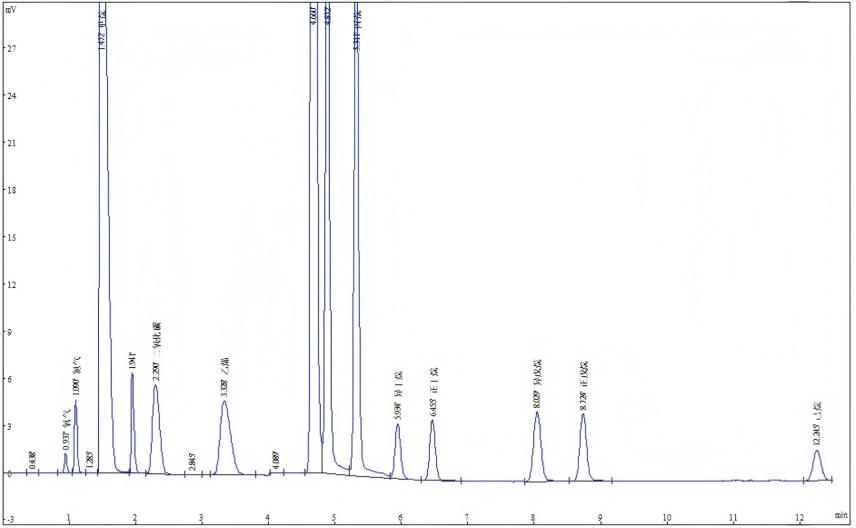
Pan Chengqiao [39] et al. used a glass column (2.1 m × 3 mm) with a chromosorb W (AW) packing material (60–80 mesh) and a 2% OV-17 (polymethylsiloxane with medium phenyl content) stationary phase in their gas chromatographic method for determining octacosanol in health food products. with a glass column (2. 1m × 3mm), a Chromosorb W(AW) carrier, 60-80 mesh, a 2% OV-17 stationary phase (polymethylsiloxane with medium phenyl content), a column temperature of 270°C, an injection port and detector temperature of 320°C, a carrier gas flow rate of N2 (50 mL/min), and a hydrogen-flame (FH) detector. The lowest detection concentration of this method is 0.0032 mg/mL, and the recovery rate is 90. 1% to 104.5%, with an RSD of 1.2% and a measurement error of less than 10% for two measurements.
5.2.3 Color-mass spectrometry
This method uses chromatography and mass spectrometry for online analysis [40]. The substances separated by chromatography are introduced into the mass spectrometer for substance identification. It is a detection method that simultaneously performs qualitative and quantitative analysis.
6 Currently, there are pharmaceutical and health food products and beverages on the market that contain octacosanol
Since the 1980s, products containing octacosanol have been sold in Japan and the United States as food and beverages. It is said that more than ten companies in Japan produce nutritional supplements using octacosanol as an ingredient. In 1994, the annual output of just four companies reached 25 tons (Japan Oil and Fat Corporation 10 tons, Sumitomo Fine Chemicals 5 tons, Taiyo Kagaku 5 tons, and Kasei 5 tons), used in health foods, cosmetics, feed and other fields. In 1996, the total sales of food and beverages containing octacosanol in Japan reached 1 billion yen. Existing products containing octacosanol include sports drinks, candy, biscuits, chocolate, anti-fatigue drinks, health capsules, health foods, etc. Due to the limitations of extraction technology, early products containing octacosanol were mainly wheat germ oil concentrates. Since 2000, high-purity octacosanol products have gradually replaced them, with a price of thousands of dollars per kilogram.
There are some examples of the application of octacosanol powder in functional foods [7, 11-12], such as: Now Foods (octacosanol powder) in the United States, 2g per teaspoon, contains 3.6 mg of octacosanol; Solarayine (energy-enhancing food) from the USA contains octacosanol; Unipro ine—Oct—2000 (the main ingredient is octacosanol and magnesium aspartate) from the USA contains 2 mg of octacosanol per capsule; Suntory's anti-fatigue drink from Japan is made from octacosanol, trace elements, etc.; Suntory's anti-fatigue drink is made from a combination of octacosanol, trace elements, etc.; Roche's sports candy is made from a combination of octacosanol and vitamin E; Nihon Oil Shokai Oct—1500 is a nutritionally balanced functional food made from a combination of octacosanol, Korean ginseng, soy protein, etc., 300 mg/tablet, containing 12.5 mg long-chain fatty alcohols, of which 1.5 mg is octacosanol; Japan's Yoshihara Company's GOLD-NI capsules, 1 g, contain 5 mg of docosanol, 250 mg of natural vitamin E, and 200 mg of linoleic acid and linolenic acid. Another product, “Vivid,” is made from a combination of docosanol, wheat germ, soy protein, and oyster extract.
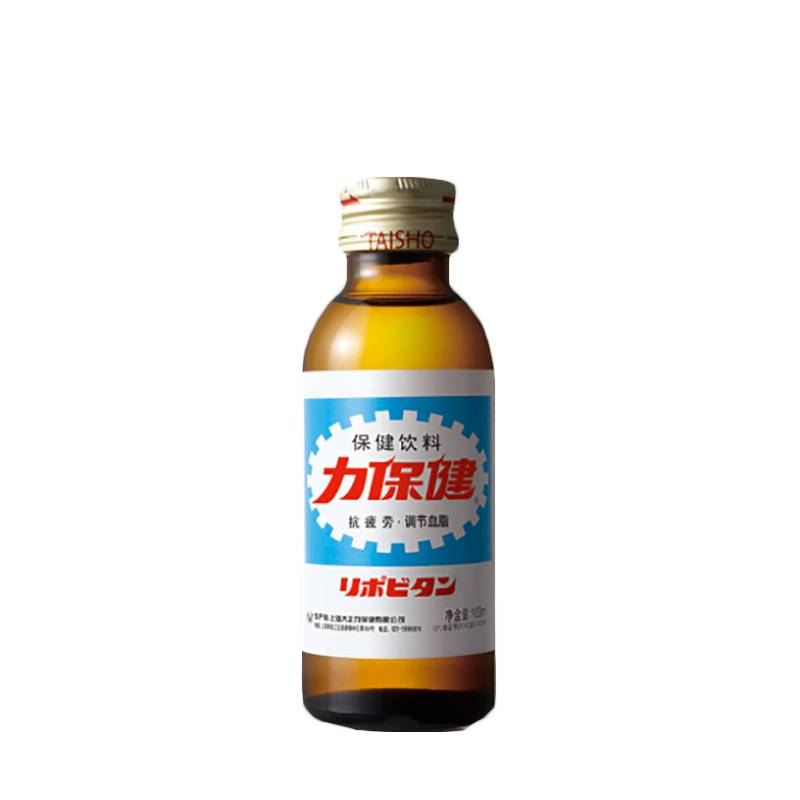
At present, there are dozens of companies in the United States that use octacosanol to produce health products. Some of the more established ones include Atlantis, which produces Biosuisse Royal Jelly Imperia capsules; Nutrilab, which produces Stamiplex capsules, Twin lab capsules, and Energe-Activator capsules; Coutrylife, which produces Natol MBA Thermatol capsules; Garada International produces LESSTANOL products, and so does Dr. Winfried Behr in the United States, Advance Scientific & Chemical, Inc. in the United States, BASF in Germany, Chemos GmbH in Germany, and NOVA Chemicals Europe in the United Kingdom.
Domestic health product manufacturers [6] and pharmaceutical manufacturers have also begun to develop products containing octacosanol (such as Baiyunshan Pharmaceutical's “Honeysin” lipid-lowering tablets). Jiangnan University's Oubai Te Food Company has developed a product with 50% to 60% octacosanol content using rice bran wax, and it has passed the pilot test. Other current domestic octacosanol manufacturers are listed in Table 2.
7 Development prospects
Octacosanol can be used to make a variety of health-functional foods, such as candy, pastries, and beverages. These products are currently very popular abroad. In Japan, 1 million cases of an athlete's drink made with octacosanol were sold in just two months after it was launched, and it is predicted that 6 million cases will be sold in a year. The Zhejiang Provincial Institute of Food Research has been committed to the development and production of high-grade alkanol products since the 1980s and has already established a mature process. Xiamen University has also conducted research on the production and pharmacological effects of octacosanol. Due to its special physiological functions, octacosanol is suitable for use as an additive in a new generation of sports drinks and high-energy drinks developed by the military for military use, and has a very broad market prospect.
Reference:
[1]CURETON T K. The physiological effects of wheatgerm oil on human in exercise,Springfield, Illinois, Thomas, C.C., U.S.A.(1978).
[2] A. Laguna Granja, J. Magraner Hernandez, D. Cabahug Quintanilla, et al. Mixture of advanced aliphatic primary alcohols, method for preparing the same from sugarcane wax, and pharmaceutical application thereof [P]. Patent application number: 93103165.
[3]Laguna Gran ja; Abilio (Havana, CU), Magraner Hernandez; Juan (Havana, CU), Carbajal Quintana; Daisy (Havana, CU),Mixture of higher primary aliphatic alcohols, its obtention from sugar cane wax and its pharmaceutical uses , United States Patent 5,856,316.
[4] Bao Guoyu. Discussion on the extraction of certain health products from sugar cane [J]. Sugarcane Sugar Industry, 2003(1): 40-46, 2003(2): 41-44.
[5] Li Xiaoguang, Wang Sanyong, Li Chunrong, et al. Method for preparing high-purity docosanol from sugarcane wax: China, [P]. Patent application number: 99117253.
[6] Song Jianhua, Wang Ayuan, Lei Debin, et al. Advanced alcohol beverage: China, patent application number: 03101225.
[7]Park, Cheong-Ho , Fermented drink containing high level of natural antiox idants, oc tacosanol, and beta-g lucan and its method of production, United States Patent Application 20030039723.
[8] Du Hongxia, Li Hongjun. Research progress of octacosanol [J]. Cereals, Oils and Fats, 2005(6): 13-5.
[9] Song Jianhua, Liu Zhengyang, Cheng Jianxin, et al. Research and development of the new healthy food additive octacosanol [J]. Journal of Xiamen University: Natural Science Edition, 1998, 37(3): 414-418.
[10] Chen Youshuang, Li Jiayuan. Research progress on the physiological activity and application of the functional substance octacosanol [J]. Journal of Guangxi University of Technology, 2005(3): 19-22.
[11] He Xinyi. Research status and application of octacosanol [J]. Modern Food Science and Technology, 2005, 21(2): 219-220.
[12] Lei Bingfu. Application and preparation of octacosanol [J]. Western Cereals, Oils and Food Science and Technology, 2003(3): 41-44.
[13] Xia Zhilu, Gong Tao, Chen Hong, et al. A combined toxicity and mutagenicity study of octacosanol and taurine [J]. Chinese Journal of Health Inspection, 2005, 15(8): 987-988.
[14] Guo Zhi, Xu Li. Natural high-level alkanol mixture: a new cholesterol-lowering drug from sugarcane wax [J]. Foreign Medicine: Botanical Medicine Supplement, 2001, 16(6): 231-236.
[15] Song Guoan. Some suggestions on the development of deep processing of vegetable oils and their by-products in China [J]. Lutianhua Science and Technology, 1998(1): 52-59.
[16] Xu Renpu. The remarkable 28-hydroxyoctacosane [J]. Cereals, Oils and Fats, 1993(2): 42-48.
[17] Wang Xingguo, Liu Yuanfa, Ni Bowen, et al. Distribution and function of 28-hydroxyoctacosane [J]. China Oils and Fats, 2002, 27(1): 54-56.
[18] Duan Qiongfen, Ma Liyi, Zheng Hua, et al. Research overview of several higher alkanols [J]. Forest Chemical Industry Newsletter, 2005, 39(2): 42-47.
[19]KAWANISHL KAZUKO, AOKL KUMLKO,HASHIMOTO YOHEL, et al. Free primary alcohols in oils and waxes from germs, kernels and other components of nuts, seeds, fruits and cereals[J].JAOCS,1991,68(11):869-872.
[20]PARKER. Method for synthesis of long-chain alcohols. United States Patent 4,367, 346.
[21] Yuan Shiming. Research on the synthesis of octacosanol [D]. Guangzhou: Sun Yat-sen University, 1994.
[22] Zhang Xiangnian, Shen Honggang, Li Xianwen, et al. Small-scale preparation of high-carbon alcohols containing octacosanol [J]. China Pharmaceutical Industry Journal, 2002, 33(3): 112, 144.
[23] Xu Renpu. Research on the preparation of high-purity octacosanol from rice bran wax [J]. Cereals, Oils and Fats, 2002(9):4-5.
[24] Xu Renpu, Xu Jianlin, Ding Xinzhong. Method for preparing long-chain fatty alcohols from rice bran wax: China, [P]. Patent application number: 02112420.
[25] Xu Songlin, Xu Shimin, Li Xingang, et al. A method for separating and purifying a mixture of high-grade primary fatty alcohols from beeswax: China, patent application number: 03110099.
[26]Inada; Shoshichiro (Amagasaki, JP), Furukawa; Kurune (Kyoto, JP), Masu i; Taka- chika (Hirakata, JP),等, Process for recove- ring primary normal aliphatic higher alco- hols, United States Patent 4, 714, 791.
[27]MILANOVA RADKA (CA). Long chain aliphatic alcohol derivatives and methods of making and using same, US2006020135.
[28] Xu Renpu. Application development of octacosanol [J]. Cereals, Oils and Fats, 1997(4):19-24.
[29] Xu Renpu. Research on the development of long-chain fatty alcohols [J]. Cereals, Oils and Fats, 2002(4):37-38.
[30] YU Pengcheng, HUANG Shaolie. Research on supercritical CO2 extraction of octacosanol from sugarcane bagasse [J]. Guangdong Chemical Industry, 2005 (10): 35-37.
[31] CHEN Weiping. Research on the extraction and application of food additive octacosanol by supercritical fluid technology [DB]. Xi'an: Northwest University, 2004.
[32] XU SONGLIN, WANG JUNWU, XU SHIMIN. Purification of Octacosanol by Agitated Short-Path Distillation, Chinese J. Chem. Eng., 11(4) 480-482(2003).
[33] Chen Fang, Liao Xiaojun, Wang Zhengfu, et al. Study on the effect of molecular distillation process parameters on the purification of high-carbon fatty alcohol extract [J]. Transactions of the Chinese Society of Agricultural Engineering, 2005, 21(11): 189-191.
[34] Zhou B, Zhou D, Wang X. Application of molecular distillation technology in the production of traditional Chinese medicine [J]. Food Research and Development, 2002, 23(6): 61-62.
[35] Jiang J X, Jiang R R, Song H S, et al. Mass spectrometric detection of brassicasterol in triacontanol crude powder [J]. Pesticides, 1994, 33(6): 13-14.
[36] Jiao Caishan, Wang Xingqiang. Extraction of octacosanol and triacontanol from rice bran wax and product analysis [J]. Chemical Engineer, 2002(4): 14-15.
[37] Chen Fang, Yan Hong, Cai Tongyi. Determination of octacosanol and triacontanol in furfural wax extract by gas chromatography [J]. Food Science, 2003, 24(4): 119-121.
[38] Lu J, Zhao W, Zang N, et al. Gas chromatographic analysis of natural high-grade alkanol mixtures [J]. Food Industry Science and Technology, 2004(7): 129-131.
[39] Pan Chengqiao, Gong Wenfeng, Wei Mao. Determination of octacosanol in health food by gas chromatography. Public Health and Preventive Medicine, 2005, 16(2): 51.
[40] Liu Fujin. Gas-mass spectrometry analysis of the alkane components of beeswax. Chinese Journal of Traditional Chinese Medicine, 1995, 20(1): 41.


 English
English French
French Spanish
Spanish Russian
Russian Korean
Korean Japanese
Japanese